Sapa - Famous tourist destination in the northern mountains of VIETNAM
Sapa is a tourist destination that is no longer too strange for Vietnamese people as well as international friends. Everyone knows that Sapa is one of the most livable tourist destinations in Vietnam. For more detailed information as well as many useful things about Sapa, please follow the article "Introducing Sapa" by Sinhtour.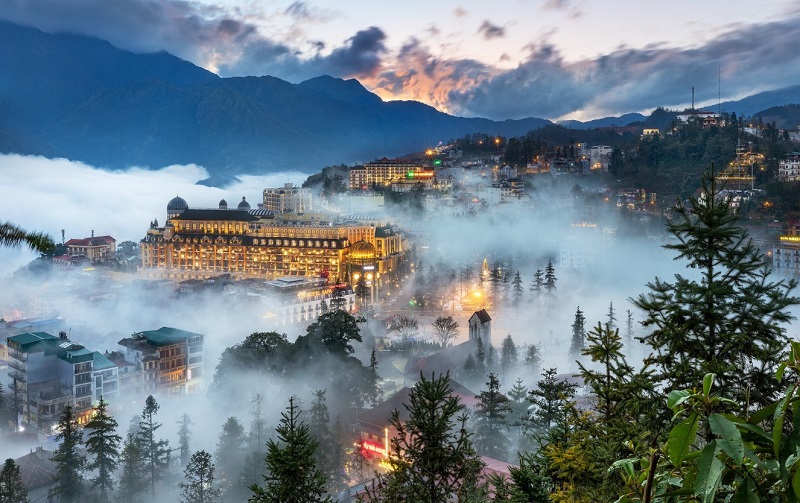 Sapa is one of the highland towns of Lao Cai province and is located in the northwest of Vietnam. Sapa town is located at an altitude of 1600m above sea level. Sapa town is about 30 km from Lao Cai city.
Sapa is one of the highland towns of Lao Cai province and is located in the northwest of Vietnam. Sapa town is located at an altitude of 1600m above sea level. Sapa town is about 30 km from Lao Cai city.
Sapa has an area of about 678 km2 and this is the main living area of the H'Mong, Dao, Tay, Giay, Kinh and Hoa ethnic groups. Sapa is a land with a quiet beauty that contains many bright things along with a wonderful natural landscape. Sapa has a combination of indigenous people, mountains and the green of nature. Coming here, visitors will feel the fresh air of nature along with the harmony of the atmosphere.
Located at an altitude of about 1500 m, Sapa's climate makes visitors feel like they are entering a temperate land with an average temperature of about 15 - 18 degrees Celsius. At the end of August in Sapa, it is also often It rains, so if you go during this time, you need to pay attention and pay attention to the weather!
The name Sapa is derived from the Mandarin word, which in Mandarin is pronounced as Sa Pa or Sa Pa, meaning sandy beach. Therefore, before Sapa town existed, this place was a sandy beach mainly for people to go to market. In addition, Sa is also a mispronunciation of the Chinese language Sha which also means Sand. From the two words Sa Pa, Westerners pronounce without accents as SaPa and they wrote Cha Pa for a long time then used the word Cha Pa to form the word Sapa.
So the name Sapa has followed local people as well as tourists from that time until now. The name Sapa has a completely different character compared to other names of Vietnam
As one of the northern provinces of Vietnam, Sapa has developed tourism very strongly, possessing fresh air along with rich natural scenery, so Sapa has become one of the top tourist destinations. Famous calendar of Sapa.
. Diverse natural landscape
Located in the remote mountainous area of the Northwest, Hoang Lien Son mountain range is known to many people. With breathtaking terraced fields imbued with the culture of the Vietnamese people. Each season terraced fields bring tourists one surprise after another, giving you a completely strange beauty to tourists. During the pouring season, terraced fields are filled with water like images of giant mirrors of the Northwest mountains and forests.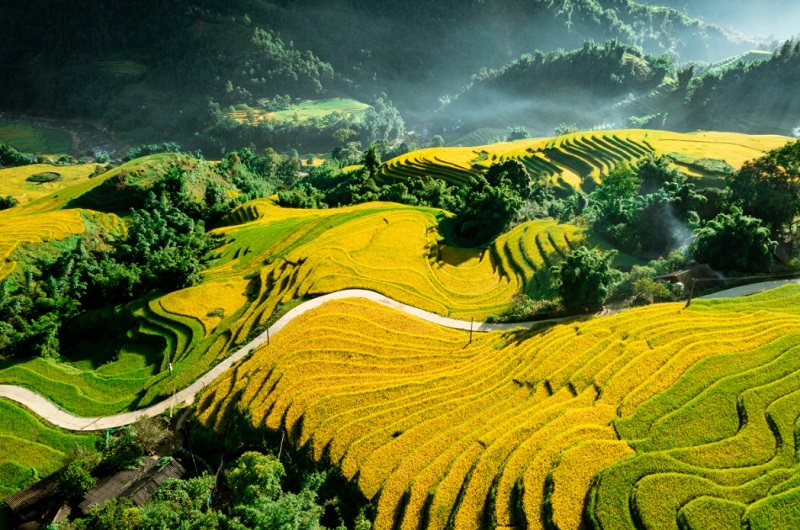
In the green rice season or the ripe rice season, Sapa's terraced fields bring completely different beauty to tourists. Not only do visitors see images of beautiful natural scenery, but they also have the opportunity to see the beauty of human labor. The hard-working and hard-working people of the mountainous land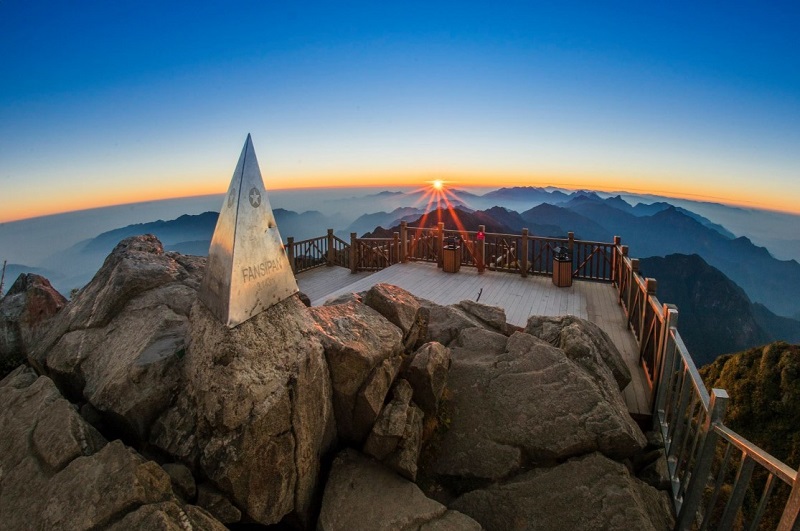 In addition to the images of terraced fields, coming here you can also see images of the majestic mountains and forests with the Hoang Lien Son range, the hills standing stunned in front of the Northwest mountains with these hills and the town still standing out. Famous for Fansipan peak, known as the roof of Indochina. Most people who come to Sapa want to conquer this Fansipan peak
In addition to the images of terraced fields, coming here you can also see images of the majestic mountains and forests with the Hoang Lien Son range, the hills standing stunned in front of the Northwest mountains with these hills and the town still standing out. Famous for Fansipan peak, known as the roof of Indochina. Most people who come to Sapa want to conquer this Fansipan peak
Enjoy four seasons in one day in Sapa
Sapa is also likened to a miniature Da Lat land of Vietnam, so coming here tourists will enjoy fresh air like a land of Da Lat. Sapa is located at an altitude of 1650 m above sea level, so coming to this place is one of the most interesting places to visit in Vietnam.
You can enjoy the atmosphere of the four seasons of the year, the morning is like spring weather with a bit of chill from last night's cold winds or the hazy mist of the high mountains. But at noon when the sun begins to glimmer in the sky, the rays of the sun have dispelled the cold of the morning, when you come here you will feel the heat of the summer day.
In the afternoon, when the sun begins to set, the temperature drops a bit, visitors will feel the chill like the autumn wind in Sapa. When you can go out, you should wear a jacket. a light shirt. In the evening, when night falls, Sapa brings you a cold atmosphere, the cold of the Northwest region brings visitors an attractive and interesting enjoyment. On hot days, you are looking for a place to stop to avoid the heat, so don't hesitate to come to this famous and attractive Sapa tourist destination.
Diverse tourism products
Sapa is a tourist destination that not only attracts domestic tourists but also attracts many foreign tourists who come here to freely experience many different tourist activities, from resort tourism activities. , adventure, explore…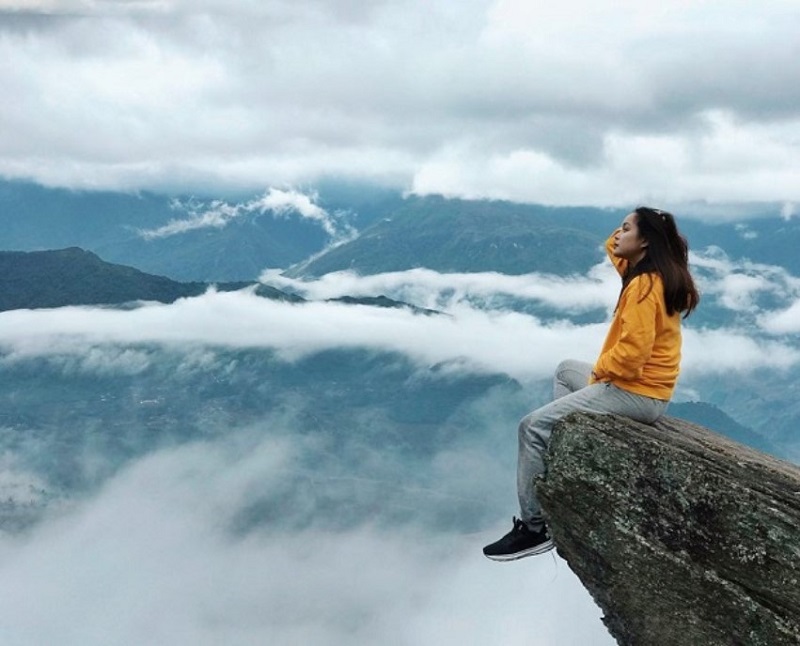 . Resort tourism is one of the forms of tourism that is no longer unfamiliar to tourists. Sapa possesses an extremely fresh atmosphere, so this tourist destination is the choice of many tourists. I want to find a place to stop and relax. During your long vacations, don't forget to come to Sapa to explore and feel all the beauty of this place.
. Resort tourism is one of the forms of tourism that is no longer unfamiliar to tourists. Sapa possesses an extremely fresh atmosphere, so this tourist destination is the choice of many tourists. I want to find a place to stop and relax. During your long vacations, don't forget to come to Sapa to explore and feel all the beauty of this place.
In addition to resort tourism, discovery and adventure tourism is also one of the forms of tourism that tourists absolutely love when coming to Sapa. The Northwest region is already famous for its villages of Northwest people. Tourists who love to explore, especially foreign tourists coming to Sapa, often choose trekking to explore as well as explore. as if to feel all the beauty of this place. Go deep into the homes of local people to discover the beauty of this place. Sapa is also famous for Hoang Lien Son with the Fansipan mountain range. This is also one of the places that anyone who wants to explore should choose to climb mountains as well as explore the beautiful natural scenery of this place.
Sapa is a highland area of the North of our country, where many ethnic minority communities live here, people in the Northern mountainous area. There are about 5 different ethnic groups living here such as H'Mong, Red Dao, Tay, Xa Pho, Giay, these are the ethnic groups living the most in Sapa.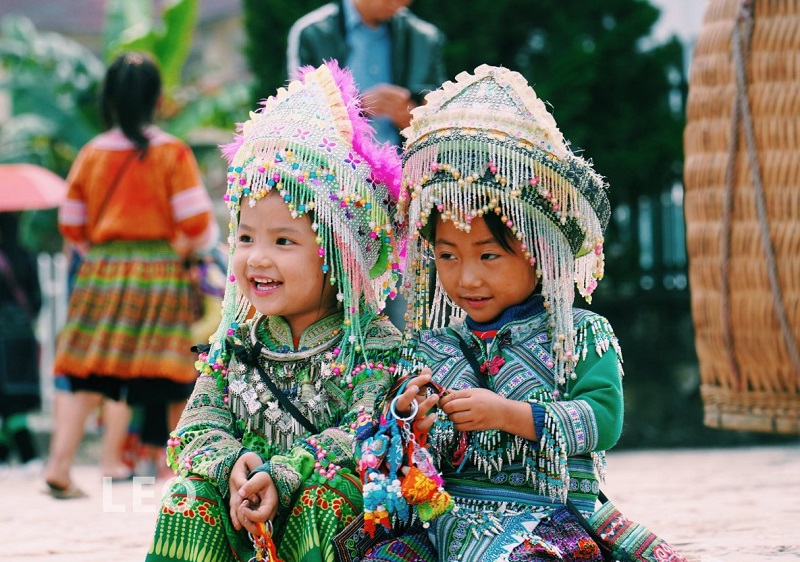 In addition, currently in the town area, Kinh people come here to trade, so the number of Kinh people here is also relatively large. Next is the H'Mong and Red Dao people who are one of the most populous communities in Sapa.
In addition, currently in the town area, Kinh people come here to trade, so the number of Kinh people here is also relatively large. Next is the H'Mong and Red Dao people who are one of the most populous communities in Sapa.
In addition to Sapa town, there are also many different villages for tourists to freely explore and learn about the culture of this place. In Sapa, there are a total of 7 villages. Each village has its own characteristics and culture of each region. To learn more in detail and clearly about the villages here, let's find out with Sinhtour. This is one of the living villages. of the H'Mong people, in addition to the beautiful scenery in Sapa with extremely eye-catching terraced fields and the romantic Muong Hoa stream, Cat Cat village also has many built
Cat Cat village: this is a village that is not too strange to tourists when coming to Sapa, only about 2 km from Sapa town, this is the main living place of H'Mong people, come here to visit. Visitors not only feel the beauty of the atmosphere but also discover the natural beauty of this place. Cat Cat village develops many tourism services to help tourists visit and check in to tourist attractions here.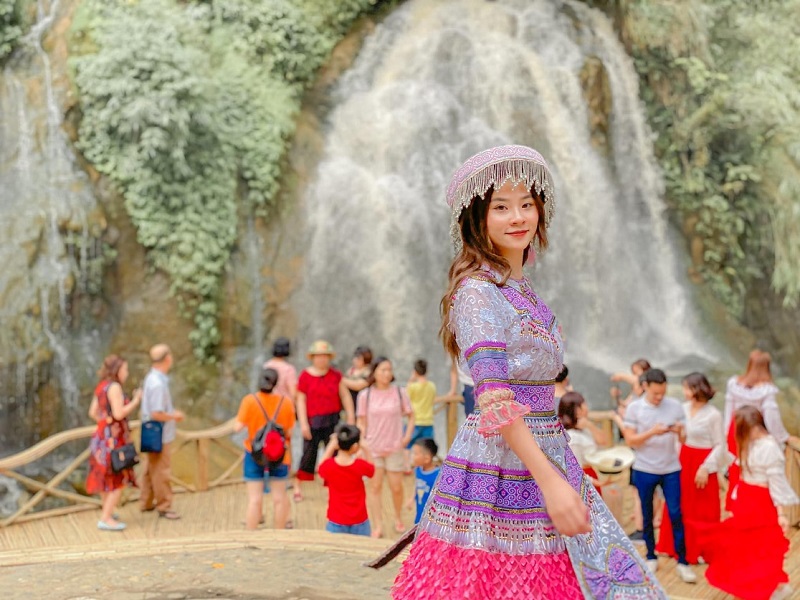 Ta Phin village: is one of the villages inhabited by the Red Dao ethnic group, about 14 km from Sapa town, located in a valley area with all four sides surrounded by the mountains of Hoang Lien Son here. This place is famous for the medicinal bathing method of the Red Dao people. If you have the opportunity to come to Ta Phin village, you should try once to experience the medicinal bathing method of the Red Dao people.
Ta Phin village: is one of the villages inhabited by the Red Dao ethnic group, about 14 km from Sapa town, located in a valley area with all four sides surrounded by the mountains of Hoang Lien Son here. This place is famous for the medicinal bathing method of the Red Dao people. If you have the opportunity to come to Ta Phin village, you should try once to experience the medicinal bathing method of the Red Dao people.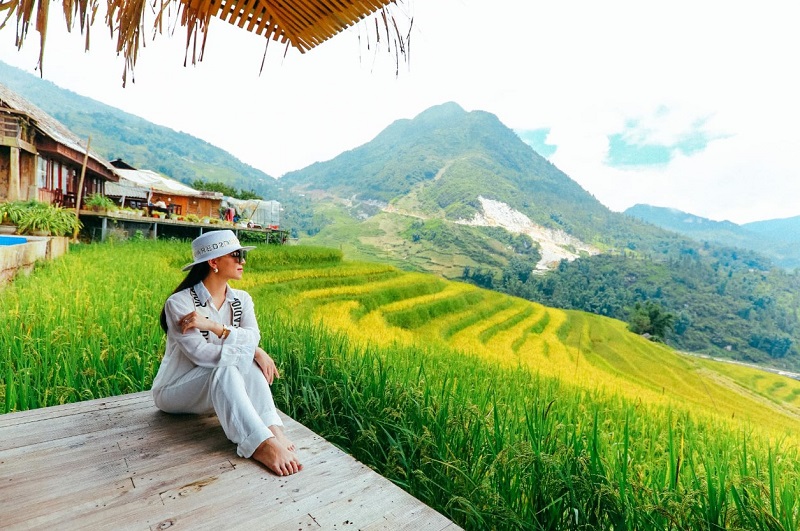 Lao Chai village: about 9 km from Sapa town, Lao Chai village is a village inhabited by H'Mong people with interwoven houses along with large terraced plots. Coming here, visitors will see The image of Muong Hoa stream flowing through each area of vast terraced fields, along with an extremely beautiful and poetic scene.
Lao Chai village: about 9 km from Sapa town, Lao Chai village is a village inhabited by H'Mong people with interwoven houses along with large terraced plots. Coming here, visitors will see The image of Muong Hoa stream flowing through each area of vast terraced fields, along with an extremely beautiful and poetic scene.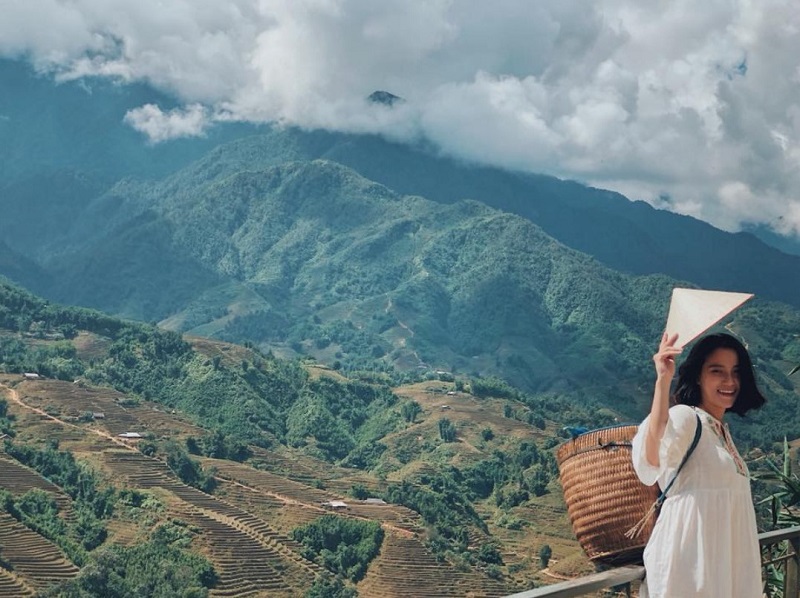 Ta Van village: About 3 km from Lao Chai village is Ta Van village, a village inhabited mainly by Giay people. Located in the valley area of Muong Hoa stream flowing through, the terraced fields are extremely beautiful and poetic, tourists often choose to combine two tourist destinations Lao Chai - Ta Van together. . No, but Ta Van village is also known as the highlight for the first homestay tourism development in Sapa. Coming to Ta Van, try to experience and live in homestay houses in the village!
Ta Van village: About 3 km from Lao Chai village is Ta Van village, a village inhabited mainly by Giay people. Located in the valley area of Muong Hoa stream flowing through, the terraced fields are extremely beautiful and poetic, tourists often choose to combine two tourist destinations Lao Chai - Ta Van together. . No, but Ta Van village is also known as the highlight for the first homestay tourism development in Sapa. Coming to Ta Van, try to experience and live in homestay houses in the village!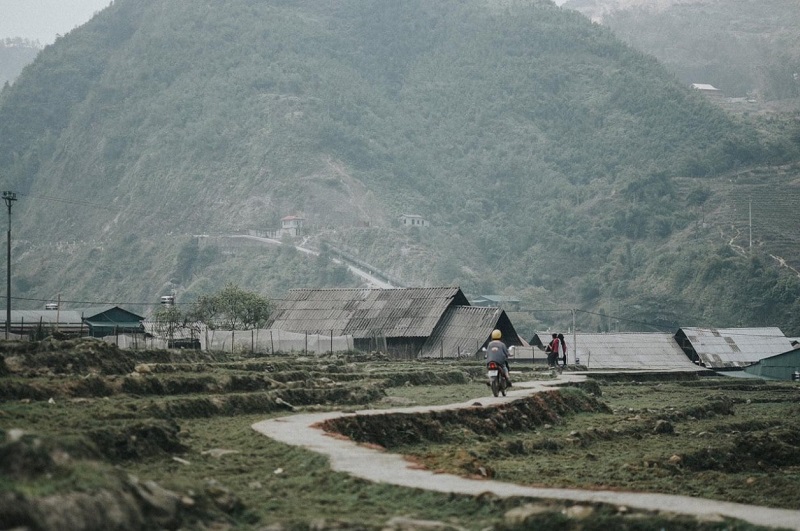 Sin Chai village: About 2 km from Cat Cat village, you will come to Sin Chai village. Although located quite close to Sapa town, Sin Cha village still retains the inherent beauty of this land. Coming here, visitors will observe the Black H'Mong ethnic people living with houses located close together along with small, wide roads with motorbikes passing through terraced fields around the majestic village. great.
Sin Chai village: About 2 km from Cat Cat village, you will come to Sin Chai village. Although located quite close to Sapa town, Sin Cha village still retains the inherent beauty of this land. Coming here, visitors will observe the Black H'Mong ethnic people living with houses located close together along with small, wide roads with motorbikes passing through terraced fields around the majestic village. great.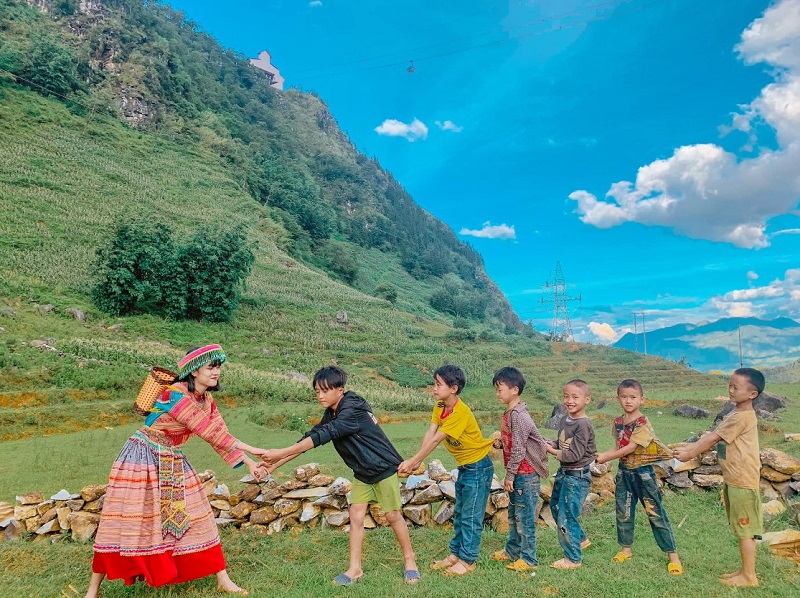 Ban Ho: One of the villages located relatively far from Sapa town about 30 km along the Lao Chai Ta Van route, Ban Ho is a village of Tay ethnic people living here, visitors will discover. Extremely poetic roads, the most interesting thing when coming to Ho village gives you a homestay experience in colorful stilt houses.
Ban Ho: One of the villages located relatively far from Sapa town about 30 km along the Lao Chai Ta Van route, Ban Ho is a village of Tay ethnic people living here, visitors will discover. Extremely poetic roads, the most interesting thing when coming to Ho village gives you a homestay experience in colorful stilt houses.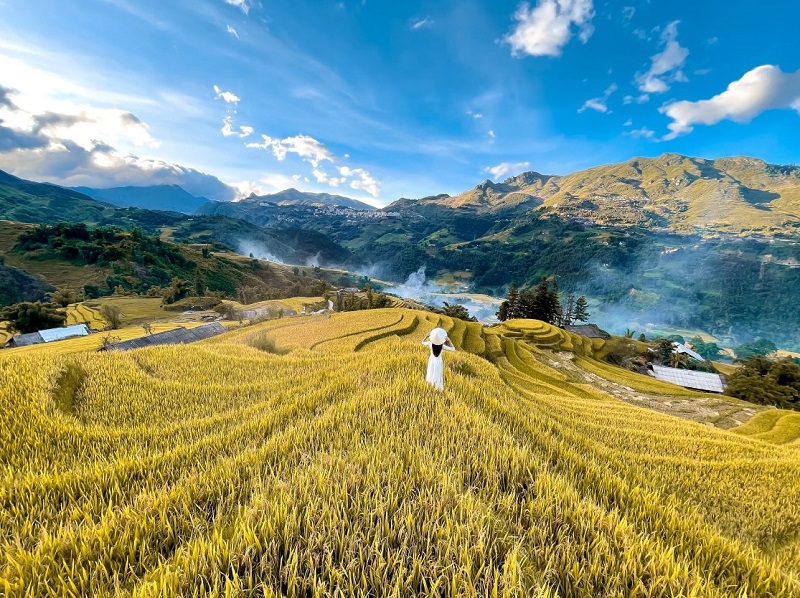 Y Linh Ho village: This is a village that very few tourists mention, Y Linh Ho is suitable for walking tours. Staying on the southern edge of Sapa town and looking down at Y Linh Ho village gives you a completely new feeling.
Y Linh Ho village: This is a village that very few tourists mention, Y Linh Ho is suitable for walking tours. Staying on the southern edge of Sapa town and looking down at Y Linh Ho village gives you a completely new feeling.
When mentioning Sapa, visitors will certainly immediately think of snow in the winter in Sapa. However, in this Sapa land, on cold days, when the temperature drops too low, snow appears. Normally, on hot days when the temperature drops to minus degrees Celsius, frost and snow appear in Sapa.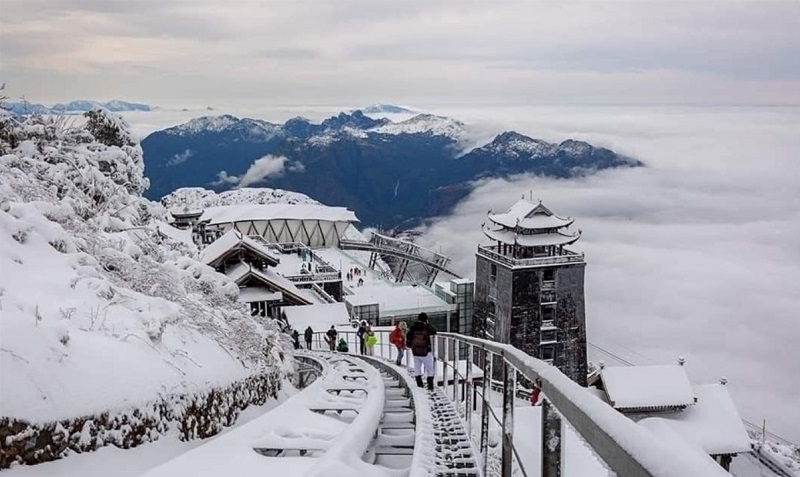 The coldest time is usually in the winter months of late December and early November. This is also the coldest time in Sapa and a number of winter festivals and snow festivals often take place here. However, snow in Sapa does not happen every winter, snow appears every winter, depending on the weather and conditions to form snow in Sapa.
The coldest time is usually in the winter months of late December and early November. This is also the coldest time in Sapa and a number of winter festivals and snow festivals often take place here. However, snow in Sapa does not happen every winter, snow appears every winter, depending on the weather and conditions to form snow in Sapa.







































